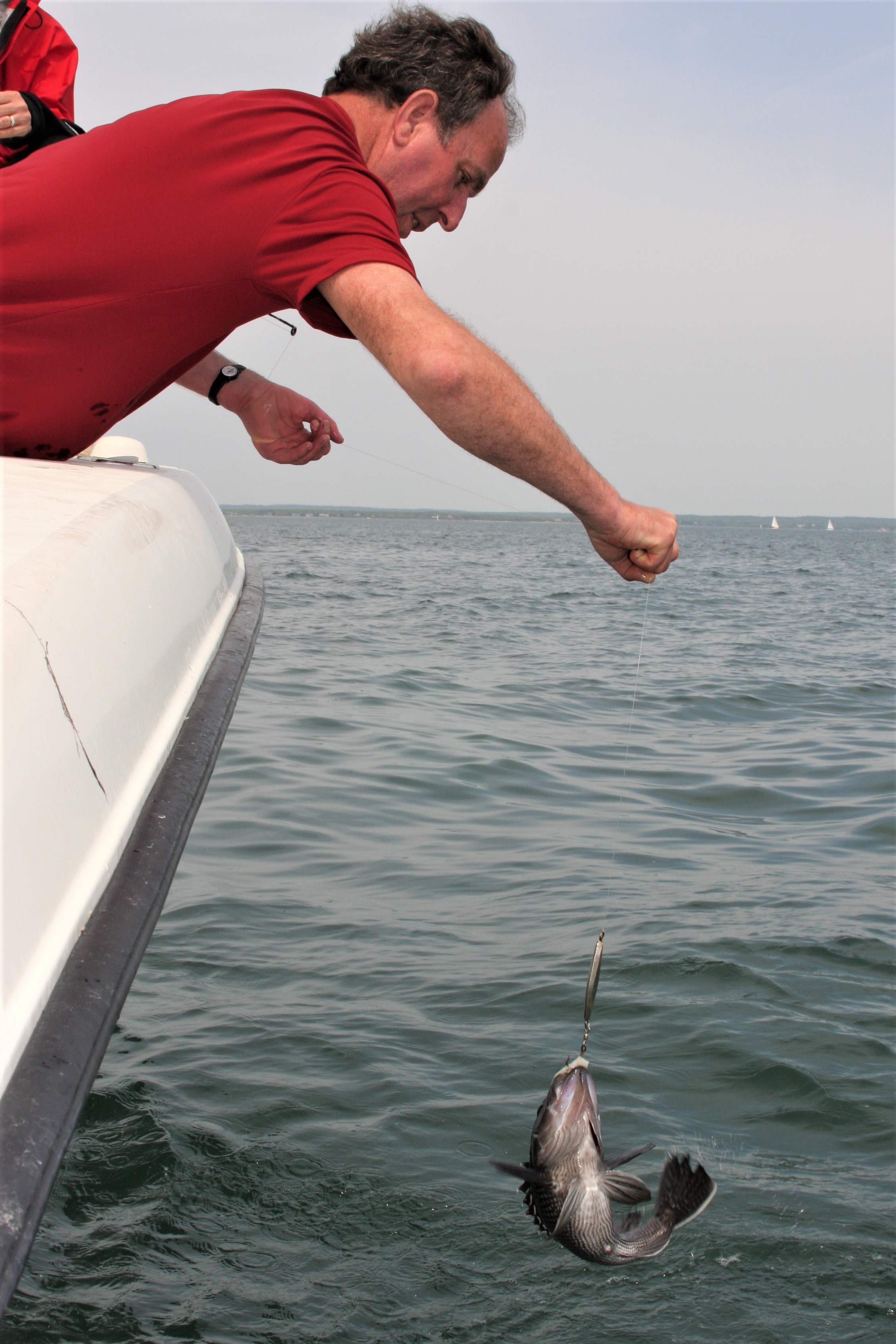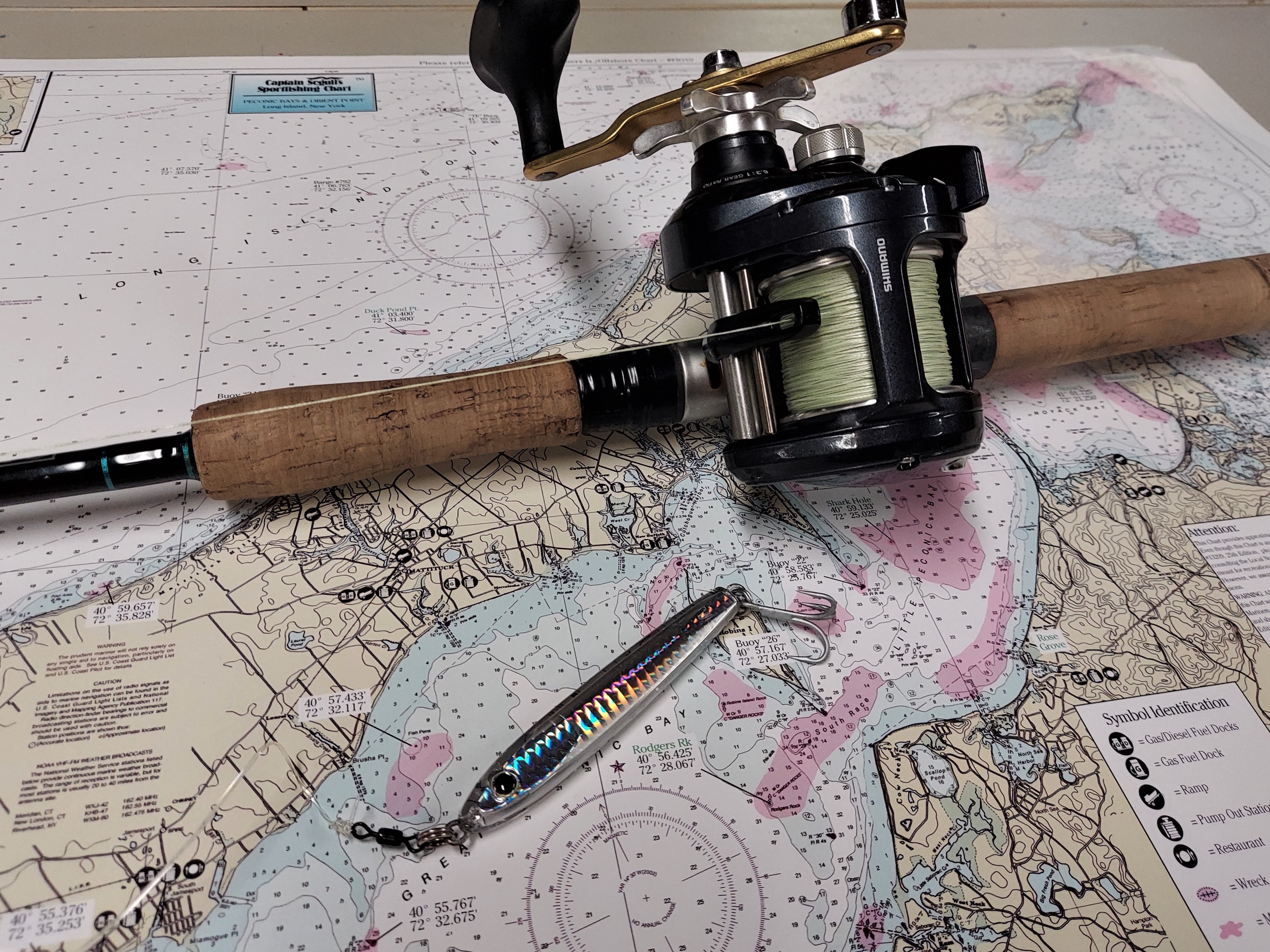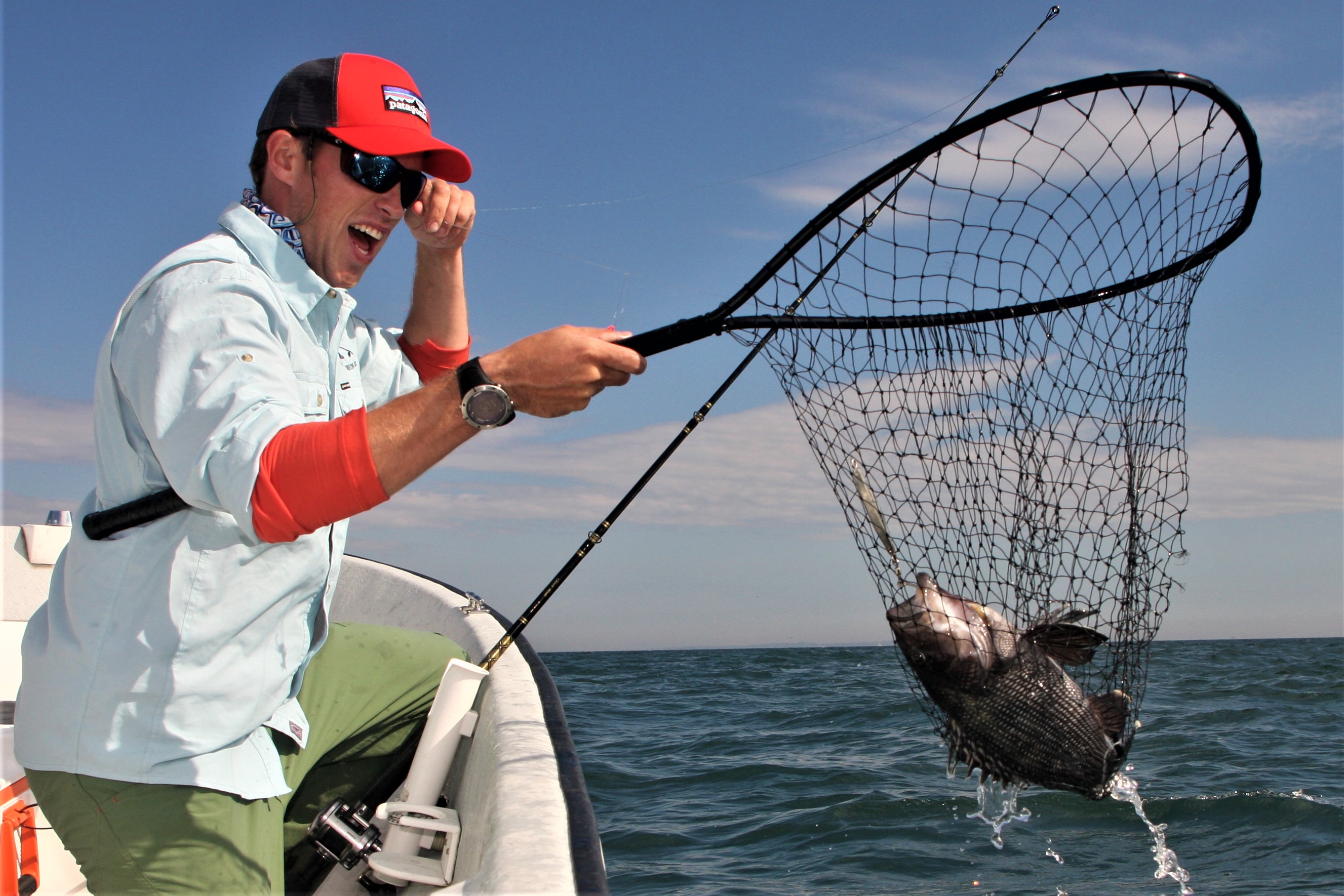Jigging Black Sea Bass
Posted by Capt. Tom Migdalski on 1st Sep 2021
Most of us agree that climate change is a really bad thing, and it’s affecting many fish species in the western North Atlantic. According to NOAA Fisheries, as the waters warm, populations are shifting northward. For bottom anglers in southern New England, however, this trend has meant a significant increase in black sea bass numbers, which were once most prevalent off North Carolina, but are now appearing regularly as far north as the Gulf of Maine.
“The hot bottomfishing in our area is now focused on sea bass,” says Capt. Q Kresser, manager at River’s End Tackle in Old Saybrook, Connecticut. “We’re seeing numbers and sizes of these fish like never before. Beginners and pros alike are targeting them with great success, which comes at a perfect time when other bottomfish species are declining. Sea bass are aggressive, fight well, and are excellent eating.”

Want to Catch a Grouper?
Black sea bass (Centropristis striata), not to be confused with other species of saltwater bass, is a highly regarded dinner entrée. It’s strictly a marine species, so unlike striped bass it doesn’t migrate into estuaries to spawn. To inexperienced or uninformed seafood diners ordering “sea bass” in restaurants, however, they are most often served Patagonian toothfish, (Dissostichus eleginoides), marketed as Chilean sea bass (or just “sea bass”), a large and ugly fish with an equally unappetizing name, found only in cold waters (34–39° F in the sub-Antarctic), which are being dangerously overharvested. The name “Chilean sea bass” was randomly invented in 1977 by a fish wholesaler trying to make the species more appealing and popular to the finicky American market. It worked.
Our local species of sea bass is technically a type of grouper (Serranidae family), which inhabits coastal waters from Maine to Florida and the eastern Gulf of Mexico. Fortunately for southern New Englanders, sea bass are most abundant off Rhode Island, southern Massachusetts, and New York. Although they range offshore to depths of over 400 feet in summer, they are most common in waters of 20 to 120 feet deep. Many anglers catch plentiful sea bass in inshore waters like Long Island Sound, Narragansett Bay and Buzzards Bay.
In local areas, sea bass typically weigh about 1.5 pounds (Connecticut regulations are a 15-inch minimum length and 5 daily limit), but any specimen of 5 pounds or more is noteworthy. Pros call large sea bass “humpbacks” or “humpies” because big ones grow a significant hump behind their head. Although black sea bass are basically “black,” their color fluctuates according to the bottom they inhabit, and they sometimes appear a dark olive brown.

Where to Find Them
Black sea bass make excellent sportfish because they’re opportunistic feeders, strike aggressively and fight hard all the way to the surface. Their varied diet includes baitfish like herring, sandeels, peanut bunker, baby butterfish, juvenile porgies, and squid, which is why metal and epoxy jigs work well.
Although not true schooling fish, experts find sea bass in clusters on structure like wrecks, reefs, and rock piles during spawning and migration periods. Adults migrate inshore and northward as water temperatures increase in the spring. The northern population of black sea bass spawns inshore from mid-May to July between Massachusetts and New Jersey, although some biologists believe the spawn lasts into August in cooler areas of our region. The fish then gradually return to deeper water in late September, moving south and offshore as sea temperatures drop in the fall. That means your last shot to target them is now.
“Almost any deep structure from eastern Long Island Sound through Rhode Island and southern Massachusetts is a potential sea bass jackpot,” says Kresser. “Sharpies closely guard their hotspots because a fleet of boats on a patch of ground can pick it clean of big fish. But there are hundreds of productive spots in New England, and many are seldom fished. Your best bet is to study a chart and your depthfinder to locate and mark your own sea bass hangouts. Don’t just follow the fleet.”
Other pros offer advice on how to work jigs.
Fishing Them
“When fishing shallower spots inside Buzzards Bay or Long Island Sound,” says Capt. Ned Kittredge of Westport, Massachusetts, “a 3- to 4-ounce jig is my preferred weight. But you can go as light as 1 to 2 ounces in shallow water with light current. Whatever size hooks are factory installed are sufficient, they’re not worth changing out for sea bass, but I prefer treble over single hooks if the bottom isn’t too rough and unforgiving.”
Experienced fishermen agree that jigs often outfish standard rigs for the biggest fish by keeping shorts and pesky porgies at bay, which can pick a high/low bait rig clean in seconds. But many experts enhanced their odds by tying in a dropper teaser above the jig consisting of a bucktail-dressed hook or soft plastic.
“I personally don’t use bait anymore,” says Kittredge. “Sea bass are hungry and aggressive. I’d rather not deal with bait if I don’t have to. Sometimes I fish with just a metal or epoxy jig, but if the fish are thick or suspended just above the structure, a teaser is a good idea. I find the sea bass will strike the jig more often, but they do hit the teaser, and sometimes you’ll land a double.”
When using small metal jigs for sea bass, a 1- to 3-ounce jig performs best because its size more closely mimics the fish’s forage. Tie a 2- to 3-foot section of 30-pound monofilament line as a leader, and attach it to 15- to 20-pound braid main line for reduced current drag.
Anglers often tip jig hooks with a small squid strip (small so as not to impair the jig’s drop speed or action), but when the bite is red-hot metal lures perform well even when fished bare. Small jigs don’t work well in water deeper than 60 feet or when the current is strong because they no longer fish vertically. Jigs large enough to reach bottom in those conditions are sometimes too large for average sea bass.
There are many ways to work a metal or epoxy jig, depending on the species you’re targeting, but for sea bass, bluefish-style speed-jigging isn’t the most productive method because you’re constantly retrieving your jig out of the sweet spot. Also not effective is the “swing-for-the-fences” approach with long and fast upward rod sweeps—good for stripers or cod—but not for sea bass.
The right technique is subtler, keeping the metal bouncing right along the bottom, as if tending a sinker, but using short 12-inch strokes by snapping the rod tip up and imparting a motion like a fluttering baitfish just inches off the bottom. Expect to hang up occasionally, and maybe lose a lure or two, but it’s well worth the reward.
“It’s important to keep your jig near the bottom,” says Kittredge, “or no more than a ‘rod-tip’ off the bottom, imparting a short-but-exact and fairly-swift jigging motion. These fish prefer structure, and rarely venture too far up to feed. But don't lose complete contact with the jig, as the strike often comes on the drop. It requires practice and touch.”

Tackle Talk
Tackle selection, like jig size, is determined by the waters and conditions you expect, as you can target sea bass in depths of 30 to 60 feet from spring through early fall, and from 80 to 200 feet in late fall.
“I jig sea bass with lighter gear than most people,” says Kittredge, “especially when using light jigs like the Game On! 1.5-ounce, 4-inch EXO Jig, which perfectly imitates prey species. I can fish all day with such a set up, and still land the occasional striper or bluefish that falls for the lure.”
For a multipurpose outfit in shallow water, try a conventional 6½- to 7-foot moderate-action rod (moderate as opposed to fast action assists with the “snapping” motion) in the 12- to 25-pound range matched with a 2/0-3/0 conventional, level-wind reel like a Shimano Tekota 500HG. Spool it up with 17- to 20-pound braid topshot over 30- to 40-lb mono backing. And then hang on for some great sport and good eating.

